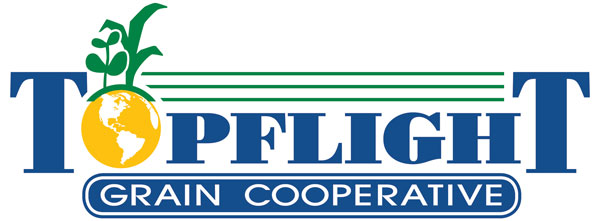
Topflight Grain Cooperative, Inc. is a farmer-owned grain cooperative in the heartland of the USA in the middle of Illinois grain belt.
The rich soils and modern farm practices produce record yields of quality grains.

Founded in 1998
Formed in 1998 as the consolidation of three local grain cooperatives and additional mergers in 2000, 2003 & 2014, Topflight Grain Cooperative serves grain producers in Piatt, Macon, Moultrie, Dewitt, Douglas, Champaign, & Logan counties. Permanent storage capacity of the nineteen facilities is 48 million bushels.

Close to Major Grain Processing Plants
The Decatur processing plants of ADM & Primient are just 25 miles from many of the facilities. Processing plants and ethanol plants near Pekin are just 40 miles from the Logan County elevators; Bloomington, IL processors are just 30 miles away. Gibson City processors and One Earth Energy are only 30 miles from the Seymour elevator. These markets provide many market opportunities for the quality grain grown by the 2,600 stockholders of Topflight Grain. The numerous trucking firms that serve all of Topflight’s grain elevators ensure prompt delivery to meet contract specifications.

Transportation Access to Gulf of Mexico
Topflight Grain facilities at Bement, Milmine and Monticello are located directly on the Norfolk Southern rail main line, allowing shipments of grain into Decatur, movement to the Illinois River, east coast, or the export market. Through a reciprocal agreement, switching on the Illinois Central affords the opportunity for export markets via the Gulf of Mexico. The expanded Topflight Grain facility at Pierson Station is located on a short-line railroad that gives us access to three Class 1 railroads. Those lines: the CSX (Southeast Markets), UP ( Western Markets), and CN serve the Center Gulf export markets. The facility can load up to 110 car shuttle trains.



















0 CommentsComment on Facebook